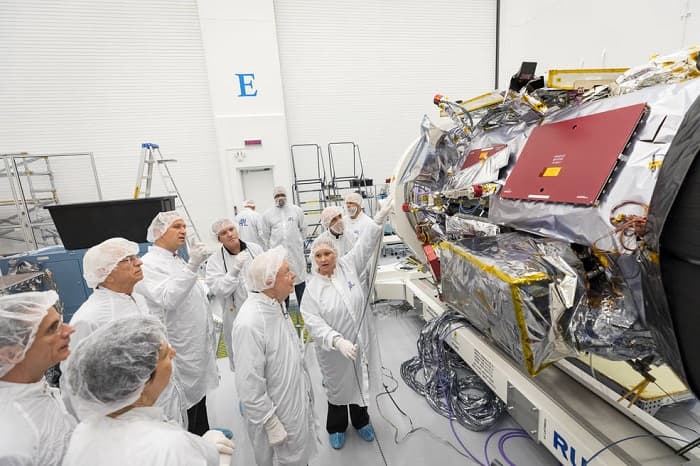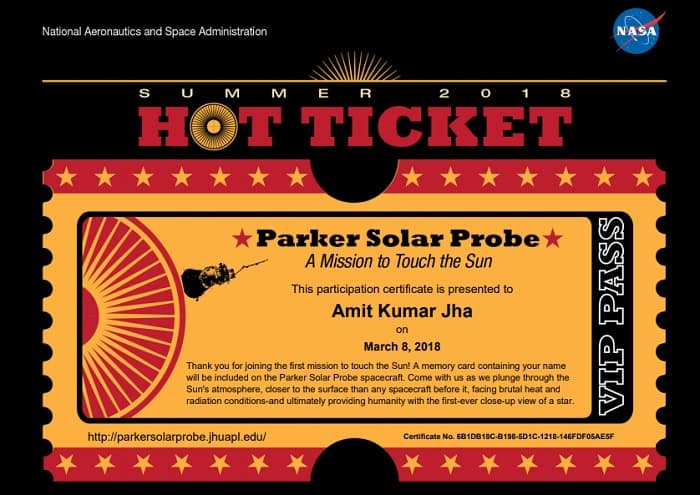Register your name as NASA is inviting people to be a part of its first mission to the Sun

Prof. Eugene Parker visiting the NASA Parker Probe at John Hopkins, Applied Physics Laboratory, Maryland
Studying the effects of the Sun on Space and the planetary system is known as heliophysics. Since our Sun is one of the important reasons behind the existence of life in this universe, scientists have been waiting over more than six decades to know the star from upfront. Temperature as high as 2,500 F exists in the region where the spacecraft will wander and thus, the spacecraft will be provided with a protective aid to carry out the sensors and instruments safely. NASA has mentioned that it will aid the spacecraft and the instruments with a 4.5-inch thick coating of the Carbon-Composite shield which will take care of the intensity of heat that will prevail outside the spacecraft.

An artist's rendition of Parker Solar Probe wandering the Sun
The spacecraft had a different name earlier. Recently, its name has been changed to Parker Solar Probe from its previous name Solar Probe Plus to honor the Emeritus Professor Eugene Parker who serves as an astrophysicist at the Department of Astronomy and Astrophysics, University of Chicago. Professor Parker has an immense contribution in the field of heliophysics, especially related to the solar corona and the solar winds. Given the importance of his research and his involvement with this mission, NASA has named its mission for the first time on a living individual.
Apart from all these, NASA is also inviting people to send their names to the Sun along with this mission. Once submitted, the names will be stored on a microchip and will be taken by the spacecraft during the mission. If interested, one can register their name by clicking on this#-Link-Snipped-#and can obtain a certificate like as shown below. The link will be valid until April 27 and one can register their name by using their email id. After registering, one can download the following ticket which will be sent to their registered email ids and can share with their social circle.

A sample ticket issued by NASA when one registers their name with this mission
Overall, Parker Probe mission seems to be full of science and adventure. For scientists, it is more like an achievement to witness the ball of fire from upfront. No doubt, if the mission gets successful, the sensors data will give a huge detail that will help the scientific community to understand the solar corona and the solar winds in a better manner. Solar winds hold the potential to cause a massive solar outage and even has the ability to destroy the lifeform on earth. Given that, the Sun has both the potential to sustain and destroy like on Earth, the importance of this mission is well justified.
Source and Image Credits - #-Link-Snipped-#
